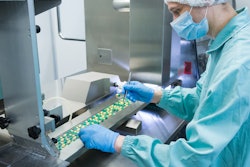
Protolabs conducted a study with 108 manufacturing customers across 12 industries between June and July 2020 to determine how companies plan to implement digital manufacturing to survive the Coronavirus disease (COVID-19) pandemic.
Here are some key takeaways:
1. How much has the COVID-19 crisis impacted your company?
● Very significantly - 35%
● Somewhat - 58%
● It has not really impacted my company - 6%
2. What is the largest overall change your industry is experiencing right now?
● How I work - 34% ● Demand down - 14% ● Demand up - 13% ● Supplier delays - 9% ● Projects on hold - 8%
3. What impacts are you seeing as a result of COVID-19?
● Supplied delays - 74% ● Delaying product launches - 47% ● Overall project funding reductions - 38% ● Slowed down new product development timeline - 38% ● Slowed down product innovation - 38% ● Working on COVID-19 specific projects - 29% ● Accelerated new product development timeline - 28% ● Accelerated product innovation - 23% ● Using new manufacturing suppliers - 19% ● Elevated manufacturing costs - 12% ● Manufacturing new products - 11% ● Working with a different mix of customers - 9%
4. How has the customer/market demand at your company changed over the past 2-3 months?
● Increased - 22% ● Flat - 44% ● Decreased - 33%
5. Which of the below rank in your Top 2 value propositions in a crisis?
● Quality - 64% ● Reliability - 49% ● Speed - 36% ● Price - 25% ● Agility - 12% ● Proximity - 8% ● Customer experience - 6%
6. How much do you agree or disagree with the following statements?
● My company has the ability to satisfy changing customer preferences. ○ Strongly agree - 26% ○ Agree - 60% ○ Neither agree nor disagree - 14% ○ Disagree - 0% ○ Strongly disagree - 0%
● My company has the ability to keep up with changing regulation. ○ Strongly agree - 28% ○ Agree - 58% ○ Neither agree nor disagree - 11% ○ Disagree - 3% ○ Strongly disagree - 0%
● I feel optimistic about the future of my business. ○ Strongly agree - 40% ○ Agree - 46% ○ Neither agree nor disagree - 7% ○ Disagree - 6% ○ Strongly disagree - 1%
● I expect my customers to return with more or less the same feature/function needs. ○ Strongly agree - 17% ○ Agree - 55% ○ Neither agree nor disagree - 20% ○ Disagree - 6% ○ Strongly disagree - 1%
● The pandemic has revealed opportunities for innovation. ○ Strongly agree - 22% ○ Agree - 43% ○ Neither agree nor disagree - 23% ○ Disagree - 11% ○ Strongly disagree - 1%
● My company has to adapt to a new product development process. ○ Strongly agree - 11% ○ Agree - 33% ○ Neither agree nor disagree - 31% ○ Disagree - 21% ○ Strongly disagree - 4%
● I expect more revenue opportunity in the post-COVID-19 market. ○ Strongly agree - 8% ○ Agree - 34% ○ Neither agree nor disagree - 40% ○ Disagree - 15% ○ Strongly disagree - 3%
● I expect to have to say yes to more custom demands from my customers. ○ Strongly agree - 6% ○ Agree - 29% ○ Neither agree nor disagree - 43% ○ Disagree - 21% ○ Strongly disagree - 1%
● The post-COVID-19 world will significantly change the types of product my company sells. ○ Strongly agree - 0% ○ Agree - 16% ○ Neither agree nor disagree - 23% ○ Disagree - 42% ○ Strongly disagree - 19%
● I expect to discontinue or close product lines and/or divisions. ○ Strongly agree - 2% ○ Agree - 7% ○ Neither agree nor disagree - 21% ○ Disagree - 46% ○ Strongly disagree - 24%
7. How much do you agree or disagree with the following statements?
● My business has faced supply chain risks in the past few months. ○ Strongly agree - 10% ○ Agree - 51% ○ Neither agree nor disagree - 26% ○ Disagree - 11% ○ Strongly disagree - 2%
● My supply chain was highly global before COVID-19. ○ Strongly agree - 15% ○ Agree - 41% ○ Neither agree nor disagree - 22% ○ Disagree - 14% ○ Strongly disagree - 8%
● I believe global supply chains are good. ○ Strongly agree - 6% ○ Agree - 44% ○ Neither agree nor disagree - 30% ○ Disagree - 17% ○ Strongly disagree - 3%
● My company will need to re-think our supply chain strategies in order to build more resilient and flexible procurement models going forward. ○ Strongly agree - 7% ○ Agree - 33% ○ Neither agree nor disagree - 34% ○ Disagree - 23% ○ Strongly disagree - 5%
● I anticipate shortages and outages across my supply chain that will impact my revenue. ○ Strongly agree - 4% ○ Agree - 32% ○ Neither agree nor disagree - 37% ○ Disagree - 22% ○ Strongly disagree - 5%
● My supply chain will change to be more domestic. ○ Strongly agree - 5% ○ Agree - 25% ○ Neither agree nor disagree - 53% ○ Disagree - 15% ○ Strongly disagree - 3%
● My supply chain will need to replace a vendor that went out of business. ○ Strongly agree - 1% ○ Agree - 12% ○ Neither agree nor disagree - 44% ○ Disagree - 31% ○ Strongly disagree - 11%
8. How soon do you foresee the below?
● Supply chain risk will reduce. ○ Now - 7% ○ Next 1-2 months - 13% ○ Next 3-6 months - 22% ○ Next 6-12 months - 28% ○ 12+ months - 14% ○ Never - 4% ○ N/A - 12%
● Inventory will be at a more predictable level. ○ Now - 11% ○ Next 1-2 months - 9% ○ Next 3-6 months - 22% ○ Next 6-12 months - 22% ○ 12+ months - 10% ○ Never - 2% ○ N/A - 23%
9. Which of the following are now true across your organization?
● Over 50% of your staff working from home - 67% ● You are personally working from home - 61% ● Reduced workforce - 18% ● Furloughs - 12% ● Working reduced hours - 11% ● Plants shut down - 7%
10. What challenges have you personally had with working from home?
● Don’t have access to all the hardware and software tools to be 100% productive - 53% ● Reduction in collaboration with team - 52% ● Keeping my personal and professional life separate - 43%
















